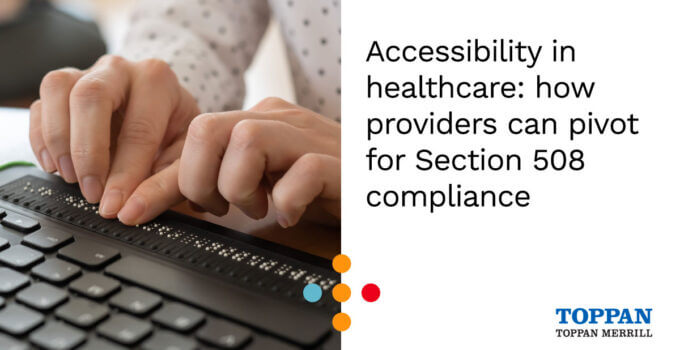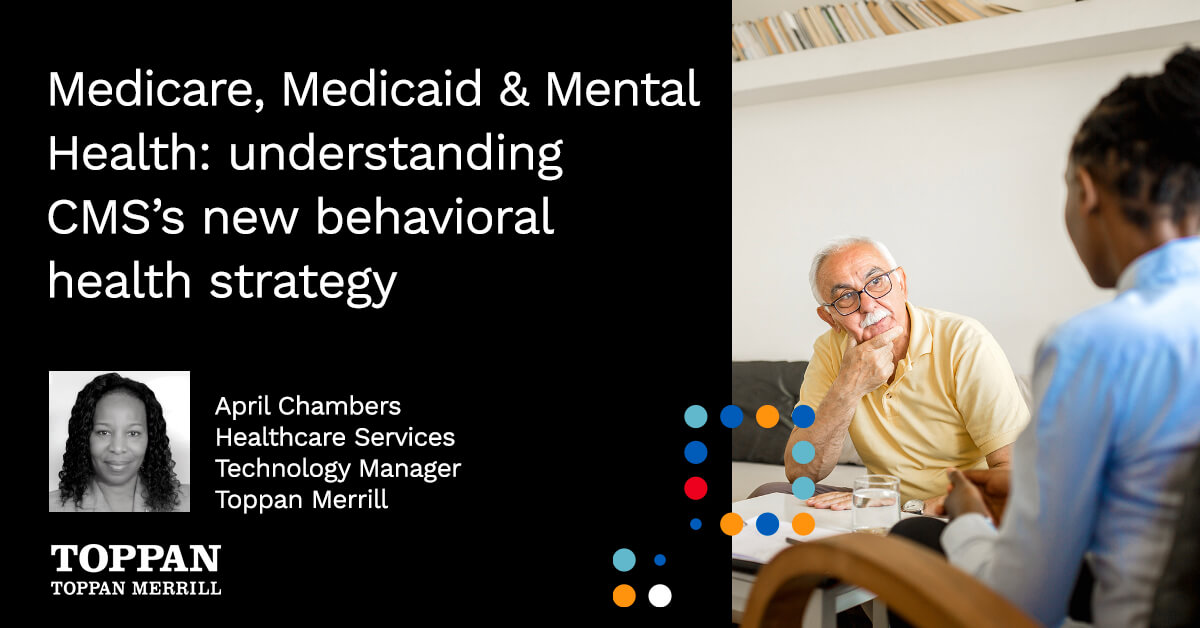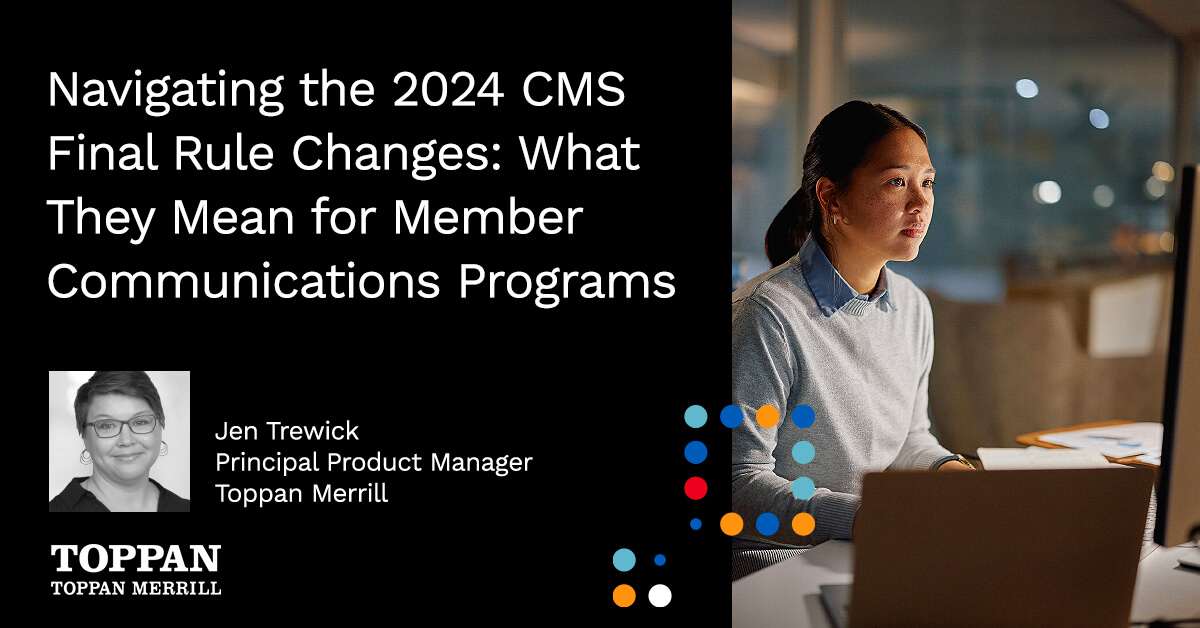COVID-19 has been the catalyst for change in healthcare, in government interaction, and with your customers and clients. It requires new ways to think of common, everyday occurrences to access primary and preventative care and inspire change.
Social awareness, diversity, and equality are all common topics, and all have a common thread — accessibility. The goal is to treat everyone the same so that the users can choose how to interact, understand the information you post, and have a positive experience that affirms your company’s vision and strategy.
What is the regulatory driver?
Section 508 is required compliance for any federally funded program. This includes healthcare and anything submitted and filed with the Centers for Medicare and Medicaid Services (CMS). It is designed to promote equal access for people with disabilities and was first introduced with the Rehabilitation Act of 1973. Then in 2017, Section 508 was refreshed to incorporate current technological capabilities.
Section 1557 of the Patient Protection and Affordable Care Act is the provision that prohibits discrimination in health programs and activities that receive Federal assistance. It is regulated by the Office for Civil Rights.
The U.S. Access Board regulates the American Disabilities Act (ADA), and the Department of Justice litigates on a federal level. Different State courts may have additional accessibility regulations, and people have other civil litigation options available to them.
Making sure you are adding value
If someone with a disability lands on your website, can they:
- Properly navigate your website, understand the sequence of the reading order, link to other pages and documents?
- Can they download or upload files if necessary?
- Is there only one option to interact with your webpage?
- Can they understand the intent of your documents without having to talk to someone to disclose their disability challenge?
Web accessibility includes the web page itself and the documents that are posted. This is essential in today’s society. Compliance with Section 508 is key to adding value for your customers and ensuring your online presence isn’t discriminating against people with disabilities.
Develop a strategy that is visionary for the future
Keep in mind the hardships you and your customers have gone through over the last two years. Pivot to customize your digital content, keep current with new developments, and keep your perspective for what is relevant.
For example, CMS continues to support accessibility. Here is a link as it applies to the Affordable Care Act direction for 2023.
- CMS Administrator Chiquita Brooks-LaSure: “With this proposed rule, we are working to ensure the Marketplaces are a model for accessible, affordable, inclusive coverage….”
- Health and Human Services Secretary Xavier Becerra: “We are building a more competitive, transparent, and affordable health care market. At the end of the day, health care should be a right for everyone, not a privilege for some.”
Here are two pointers to improve the accessibility of your healthcare organization’s content.
1. Pivot and partner with a company that has experience with accessibility
The research needed and the ability to apply accessibility guidelines can be complicated. You don’t want to spend time building a webpage or adding accessibility to a document only to find out you are partially compliant or that you used the wrong strategy.
Find a partner who has the knowledge and experience to support your goal to be 100% compliant. Anything else is not going to work. After all, it is not like you can ask someone to use only their good eye to read something. You need to be all in.
In addition to the U.S., if you are marketing your product in Europe, please keep in mind the European Commission requirements for web accessibility. Here organizations are required to monitor accessibility, create accessibility statements and track how user feedback is being handled.
2. Find your sweet spot
Getting your electronic content in line with Section 508 can have a clear, positive impact on your user base. And it benefits your business as a whole. Here are some of the biggest gains you’ll notice after improving your accessibility:
- Reach more customers: Most noteworthy is a 2019 study that found that 71% of people with a disability will simply leave a website that isn’t accessible to them.
- Improve your social vision: According to the General Services Administration, 85% of private sector businesses found that the process of improving its accessibility also helped shape its social vision, allowing the companies to view the world through the eyes of others and try to improve things for the people they work with.
- Avoid litigation: Many American companies have already been sued by consumers for having digital resources that aren’t accessible. Legal fees and fines are much more expensive than website redesigns.
- Reinforce your brand: Customers with disabilities rely heavily on healthcare organizations to support them. It’s crucial to take ADA compliance seriously to improve their experience and protect your financial security and reputation.
- Make accessibility a priority: This is not a “someday” list. This impacts your current customers, and you probably have more members with disabilities than you think.
Don’t risk not being compliant
Addressing accessibility for your digital resources will make a significant positive difference for your organization. And every day that you don’t act towards accessibility is a day you risk legal trouble. You don’t want to take that chance.
For assistance, contact us. At Toppan Merrill, we are well equipped to help out with this implementation through our 508 expertise and our insurance-focused support team that can simplify the process for you while helping to control costs. Our operational team will take care of the technical components where accuracy is critical in ensuring your documents are compliant and usable. Our service team guides the direction and coordination of efforts and always keeps your company goals in mind.



